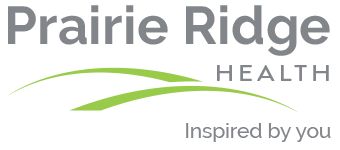Going beyond the scale - The InBody Experience at PRH
“Having adequate muscle mass is critical to health, longevity, and quality of life,” explained Emily Briggs, MS, RDN, CD and Manager of Culinary, Nutrition & Diabetes Services at PRH. “InBody measures your body’s muscle, fat and water to provide detailed information needed to make changes in diet and activity to optimize muscle mass.”
While the test is for everyone, there are three different target populations:
- Those wishing to improve athletic performance. Weight isn’t the most accurate marker of health and fitness. Body composition analysis gives you insights to know where to focus your workouts for peak athletic performance.
- Those who want to lose weight. We’ve all been there when the scale doesn’t move. The InBody can show that you’ve lost fat and gained muscle.
- The aging population. After age 50 you lose 1-2 percent of muscle every year. Those who lose muscle have a higher risk of falls and increased risk of fractures.
“This is a match made in heaven,” said Briggs. “This test brings nutrition and exercise together. If you are not pushing your muscles hard enough to maintain them when you hit a certain age, it is more difficult to maintain your muscle mass.
“If your body doesn’t have enough fuel, it will break down your muscle. Body composition analysis is a helpful tool in changing the mindset for diet and exercise – to fuel our bodies properly so we can exercise,” added Briggs.
Briggs and her team of dietitians promote the test to encourage a healthier, better quality of life. The more muscle mass you have, the less likely you are to suffer injuries, the more likely you are to continue to complete daily tasks, and the more calories you burn at rest.
“Muscle is metabolically active, so it consumes a lot of energy to maintain itself,” said Briggs. “The scale going up isn’t necessarily bad. Muscle weighs more than fat. As you are losing fat and gaining muscle, you might go up in weight.”
Who can take the test?
Anyone who is above the age of two, weighs at least 20 pounds and is able to stand upright for 30 seconds may take the test. The test is not available to those who have a pacemaker or are pregnant.
The first appointment is 30 minutes, which includes the initial five minute test and a consult with the dietician or nutritionist to review the results sheet and develop goals for diet, nutrition, and physical activity.
A follow up visit is encouraged once a month or once a quarter, to be able to appreciate the changes and meet goals.
During the follow up visit the previous results are compared to the current reading. The result sheet shows weight, lean body mass, and percent of fat mass.
“You can see it go up or down over time, which is very motivating for people,” said Emily.
In regard to physical activity, general recommendations are given regarding incorporating some type of weight training in a workout routine.
“We provide exercise bands and other information and resources developed by our athletic trainer here at PRH,” said Briggs. “We also have partnerships with local gyms so we can direct people to their local resources.”
To prep for the appointment:
- Eat and drink normally up until two hours before the test.
- Wear lightweight clothing on the day of the test.
At the appointment:
- You will be asked to remove your shoes and socks. Your feet will be wiped with a disposable cloth that contains electrolytes, which help conduct the current. You will then be asked to step on the scale. Your height, age, gender, and identifying number are entered into the machine.
- You will be asked to hold on to the handles for 30 seconds. When the time has elapsed, the machine prints out your results sheet.
- At that time the dietitian will go through each item line by line, muscle mass and body fat in each arm, each leg and the torso. It breaks it down so that you can focus on the area where you need to increase muscle mass or decrease body fat.
“It’s great to have a baseline so you can see your progress,” said Briggs. “Come in when you are not feeling the fittest. We don’t judge. We are health professionals and it is conducted in a confidential area.”
Briggs first took the test last October at a food and nutrition expo in Chicago. “I saw what the results sheet looked like and saw the improved technology and said, ‘I need to get one of these for the hospital!’
The program is self-referral and self-pay starting at $25 for the first appointment. Appointment times are 8-4:30 Monday-Friday. Additional early and late appointments are scheduled as needed.
To schedule an InBody Composition Analysis or for more information, contact Sara Zook, RDN, CD, CHWC at 920-623-1545.

